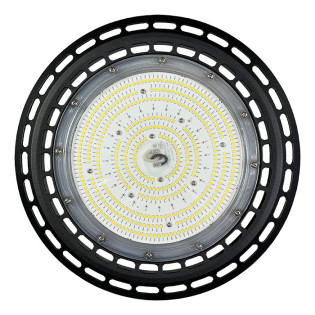
Hydroponic peppers might not be the easiest plant you can cultivate with this style of growing - but even if you're a new grower, it isn't impossible!
With the right products & resources, you can easily start cultivating your favorite varieties in your home or on a commercial scale.
From hot peppers to sweet peppers, banana peppers to bell peppers, all shapes, sizes, and varieties of these tasty vegetables can be grown in a hydro environment.
Whether you're brand new to this growing technique or you're a seasoned hydro green thumb, this complete guide is going to arm you with the knowledge you need to bring these from seed to your dinner plate!
We'll discuss some of the benefits and expectations you can have when starting out your pepper production. Then, we'll share our step by step guide to cultivating these hydroponically.
From choosing the right system to fertilizing and harvesting, we're going to cover each and every aspect you need to be aware of. We've got a lot to cover, so let's dive in!
Can You Grow Peppers Hydroponically?
You not only can grow peppers hydroponically, but you should really consider giving this a go. This method of growing is far more efficient and economical than growing in soil.
While many people refer to hydroponic growing as "tougher", it can actually be more simple and automated once you have your system dialed in and you get the hang of things!
Plus, it caters to gardeners in all growing zones. Getting started is easier than you might think - but first, let’s explore the many benefits associated with this growing technique.
What Are The Benefits Of Growing Peppers Hydroponically?

There are many benefits associated with growing peppers hydroponically. For one, it will allow you to produce more pepper plants with less space.
You can modify your hydroponic system to suit whatever growing space you have available. Whether you're growing indoors or growing in a greenhouse, you can tailor your system to meet your needs.
Not only that, but you can use hydroponics to grow peppers at any time of the year, since you won't be growing outdoors and limited by the weather/seasons.
This is a major advantage for gardeners who are used to having to wait until June to start growing peppers outdoors.
When you’re growing peppers hydroponically, there are also fewer diseases and pests to worry about than what you might have to deal with outside.
Other benefits of hydroponics in general include faster growth rates, better flavor and aroma, and bigger, heavier pepper plants!
How Long Does It Take To Grow Peppers Hydroponically?
When growing peppers hydroponically, it will generally take about 50 to 80 days for them to mature. This varies depending on the type of pepper you are growing.

While sweet pepper varieties can be ready for harvest relatively quick, others will need up to 150 days to ripen.
Comparing that to growing in soil, you can save time and potentially squeeze an extra grow cycle in every year, or at the very least, see a return on your investment quicker.
How To Grow Hydroponic Peppers - Step By Step Guide
Ready to learn more about growing peppers hydroponically? The first step is choosing the right system, as this is the entire foundation of your production.
Luckily for you, we are the experts on all things hydroponic growing. Because of this, we have some recommendations for you.
What Hydroponic System Is Best For Peppers?
You can use just about any kind of hydroponic system to grow your peppers. Here are some of the most sensible choices for these types of plants.
Hydroponic Ebb & Flow Systems
Ebb and flow is one of the most popular systems for indoor growing. Often referred to as flood and drain, the system works just as it sounds.
Your grow tray holds plants in place and is supported by a bench or stand. The reservoir is beneath, holding both your water and nutrients solution.
Every few hours, the system will flood the tray with water and nutrients, letting the plants soak up both for about 10 or 15 minutes.
You can automate your ebb and flow system so that your only responsibility is monitoring reservoir conditions.
And when you shop here at Hydrobuilder, we have systems for every grower - from novice hobbyist to commercial cultivars.
Hydroponic DWC Systems
DWC, also known as deep water culture, is another popular method used to grow hydroponic peppers.
Deep water culture involves suspending plants directly in a nutrient solution. The solution is held in a hydroponic reservoir, meaning the roots stay in the reservoir in perpetuity.
There’s no water pump, with an air stone and air pump instead oxygenating the root zone of your plants.
These low-maintenance systems can help you grow a high quantity of peppers in a short period of time.
There are few moving parts, so it’s also easy to fix them if something does happen to go wrong.
You can find everything you need to design your own DWC system, including full kits with trays and stands that can be customized by size and type, as well as individual components, by shopping the DWC category at Hydrobuilder.
How To Start Hydroponic Peppers - Seeds vs Clones
It is best to germinate pepper plants from seed. Before you do this, pre-soak them in lukewarm water overnight. Just put the water in a small glass and drop your seeds inside.
This will help soften the hard exterior coating of the seeds, which will make it easier for them to germinate later on.
Then, you’ll need to prepare your growing medium. In general, starter plugs work well, offering versatility without the potential for them to clog your system.
Set the pH of your water to 5.5 and insert your media into the tray. The plugs should be moist but not too wet. Plant them at a depth of ¼” and pat down gently to make sure they are totally covered.
At temperatures of 80-85 degrees, your seeds should germinate in about a week. Use a heat mat to get your seedlings warmer if you're struggling with temperature.
After your seeds have germinated, you can remove all but the strongest of the seeds from each plug.
Simply clip them off with a pair of scissors. If you don’t want to start from seed, you can also clone existing pepper plants if you can get your hands on them.
This will allow you to get a plant with the exact same traits as the one being cloned. You can even transplant plants that were started in soil.
Whichever method you choose, you’ll be able to find all of the seed starting, cloning, and transplanting equipment and supplies you need by shopping at Hydrobuilder.
How Much Light Do Hydroponic Peppers Need?
Peppers require a minimum of 14-18 hours of light per day - the more the better.

If you're growing in a greenhouse, you might get some of this light naturally, but you'll likely need some supplemental grow lighting - especially if you're growing indoors.
LED and HID grow lights tend to be best for hydroponic peppers in most cases, as opposed to weaker fluorescents.
If you're on a tight budget, LED's may be a bit of stretch. But you can rest assured you'll more than make up for the investment in energy savings and yields!
Tips & Tricks For Growing Hydroponic Peppers
Bell peppers in particular need lots of room to grow. Space your plants at least 18 inches apart. You may also need to train your plants as they grow and develop top-heavy fruits.
Pinch and prune your bell peppers once they reach a certain size, too, which will encourage new shoots and help them from growing too large.
There are several “stages'' at which you will need to fertilize your hydroponic peppers. The first is when the first set of true leaves appear.

You can apply fertilizer at half strength. This fertilizer should be one focused toward vegetative growth.
Once your plants are ready to flower, use a nutrient solution that contains more potassium and phosphorus to help the plants flower and fruit. A hydroponic nutrient package is the best option for fertilizing your crop.
Once your plants set flowers and fruits, you will need to pollinate them. These plants have both male and female parts - that means all you need to do is use a Q-tip or tiny paintbrush to rub the flower and assist with pollen transfer.
Your peppers should be ready for harvest around 50-80 days after sprouting. Bell peppers generally start off green but then change color to red, yellow, orange, or purple.
You can harvest at any stage. Simply cut them from the plant to avoid damaging the plant’s fragile roots.
Final Thoughts On How To Grow Hydroponic Peppers
Now that you know everything there is to know about how to grow hydroponic peppers, all that’s left is grabbing your supplies & seeds/clones.
Hydroponic growing does require a few more types of equipment and materials than other kinds of growing, but you can make quick work of your shopping chores by heading over to Hydrobuilder’s extensive hydroponics selection.
Here, we have everything you need to start growing peppers hydroponically - and we offer it all at the best prices and with superior customer service.



































